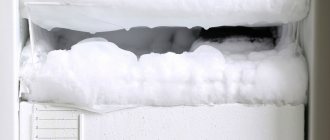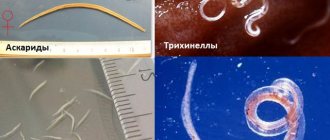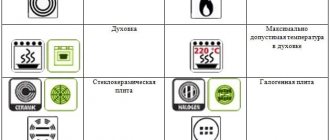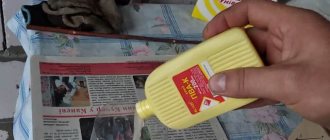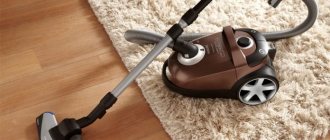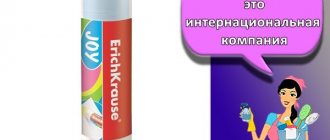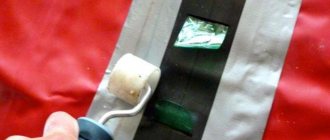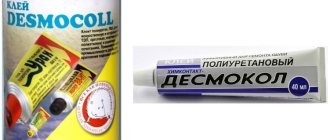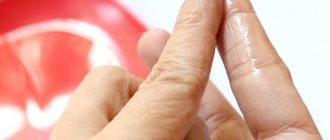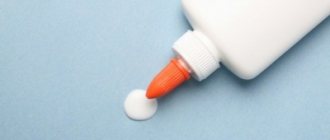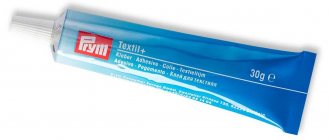Who doesn’t know about PVA glue, which is actively used for gluing products from various types of materials: wood, ceramics, chipboard, linoleum, paper, glass, fabric and leather bases. The popularity of the glue is determined by the high-quality adhesion of the material and the surface to be glued, its affordable cost, increased resistance to moisture, but, at the same time, good solubility in water, which in itself answers the question, how to dilute PVA glue? The purpose of the glue is determined depending on its type.
PVA glue is the most popular substance in the world. It is universal and will be useful both when studying at school and when carrying out repairs in a house or apartment.
Main types of PVA glue
The main types of PVA glue compositions, divided into types according to purpose, include:
- stationery - for gluing paper and cardboard bases;
- wallpaper or household - for gluing paper materials to wooden and cemented surfaces;
- construction – for fiberglass, paper and vinyl compounds. Serves as an additive for primer compositions, which helps improve the technological properties and adhesion of subsequently applied materials: putty, plaster, dry mortar;
- super M – indispensable for gluing products made of vapor-proof materials, ceramic and porcelain products, fabrics, glass, leather. In addition, it is used when installing a variety of floor coverings;
- Extra - used for gluing wood, plywood, construction mesh, wallpaper (cork, vinyl, paper, fiberglass), sickle. Used as an additive to improve strength;
- Universal – useful for gluing paper and laminated paper decorative plastic to wood, glass and metal surfaces.
Can PVA be diluted with water?
The very idea of diluting too thick glue with water did not come out of nowhere. This is all explained by the fact that it contains water.
The answer to the question is yes. This is one working way to reuse thickened glue.
When salvaging glue, you should use warm water (about room temperature) when diluting the PVA. If the liquid is too cold or too hot, the composition will lose most of its technical characteristics, and the seam after gluing with “saved glue” will be unreliable.
As for the proportion of components, it should be approximately 1:10. The amount of glue should exceed the amount of diluted liquid by 10 times.
Source sdelai-lestnicu.ru
If you increase the amount of liquid, your mixture will lose its gluing effectiveness. For example, they will no longer be able to connect wooden parts - the glue simply will not hold.
If your glue has not been used for a long time and has thickened, then before adding liquid to it, you need to remove the crust that has formed on the surface. Glue lumps that resemble jelly do not need to be removed. When thoroughly mixed with water, they will dissolve into the mixture.
When diluting office glue, do not use alcohol or acetone. If they are part of the newly formed mixture, then there is a possibility that these substances will corrode the surfaces being connected.
However, not all types of glue can be diluted with water. Yes, if it is a household or office type of PVA that has simply thickened, then you can try diluting it with water in a ratio of 1 to 10. In this case, super-M or universal PVA cannot be diluted in any way - just throw it away and replace it. But if the glue has dried, then you can only throw it away and buy a new one.
Source dm.henkel-dam.com
To thoroughly mix the composition with water, you must:
- First of all, prepare the container;
- Afterwards, pour glue into it, and then add water in a certain proportion;
- The mixture must be stirred until you obtain a homogeneous white mass;
- The last step is to simply let the composition sit;
- You cannot use the solution immediately after mixing - there is a risk of damaging the product being glued. The mixture of glue and water should be left alone for at least half an hour.
If you use glue as a primer to increase the adhesive properties of walls before painting, then the proportion of water to glue should be 2 to 1 (there should be twice as much water as glue). As a result, you should have a liquid white mixture.
In all other cases, the amount of water added should be less than the adhesive mixture.
You also have the option of making the adhesive mass yourself. It is made from starch or wheat flour and water. And the first thing you need to do is pour starch powder, flour or a mixture of them with cold water. Next, you need to boil water in a separate container. After boiling, a cold solution with starch and flour is gradually added to the container. Next, you need to continuously stir the mixture for 10 minutes or more.
The result should be a jelly consistency.
Source kraskaguru.ru
Is it possible to dilute the glue and with what?
So, we come to a question that interests many: how to dilute PVA glue? Let us hasten to answer – yes, it is possible. You just have to do it right. How to cope with such a seemingly simple task and not spoil the glue, read on.
In order to cope with the task, try to adhere to some recommendations and dilute the glue only with warm water; various types of solvents negatively affect the technical properties and structure of the composition, destroying it. In this case, it is necessary to mix the glue as intensively as possible.
Reviews of some formulations
People who regularly use PVA glue leave reviews about it quite often. For example, let’s take the compositions described above – Moment and Expopribor. Consumers see the same advantages and disadvantages in them.
As for the positive aspects, the masters note:
- efficiency;
- resistance to water, mechanical, thermal, ultraviolet influences;
- economical consumption;
- a wide selection of containers in which products are packaged;
- no pungent odor;
- the ability to be used as an independent product or as an element of a building mixture;
- not explosive.
Speaking of cons, consumers tend to only complain about the short shelf life. Otherwise, no negative aspects were found.
How to dilute the dry mixture
You already know how and with what to dilute PVA glue in its usual form, but sometimes you have to work with a dry mixture. Such substances are diluted according to the proportion or ratio indicated on the packaging. The manufacturer recommends that you adhere to these recommendations, otherwise the glue will lose its technical properties and will be useless for gluing.
As a result…
PVA glue is an extremely useful thing; it can be used almost anywhere. However, it tends to thicken quickly upon prolonged contact with air. But don't despair if your glue has become thicker. At any time, you can simply dilute it with warm water in a ratio of 1 to 10. If you have super-M or universal PVA, then they can be diluted with vinegar or acetone.
Question
Write in the comments what you think - is it still possible to “save” the glue if it has completely dried out?
An exception
If 90% of types of PVA glue can be diluted with water, then 10% falls into a special category of adhesive compositions that are present on the market and cannot be diluted with water. They are usually presented in ready-made form: in a diluted state and in appropriate containers, since they are characterized by an unpleasant chemical odor, and the substance dries out quickly in open cans. To prevent the glue from hardening, try to buy containers that are large enough to apply the glue at one time. This will save both glue and money.
There are exceptions when such glue is diluted, but only with the use of a special synthetic solvent.
What is glue afraid of?
Super glue is afraid
acetone
It is important not to miss the moment when the “super” product hardens on the surface. ... You can dissolve the stain using ordinary acetone, which is freely available at any hardware store.
Interesting materials:
How easy is it to iron clothes? How easy is it to clean a ceiling? How to easily cut wine corks? How easy is it to light a stove? How easy is it to uproot many bushes? What is the best way to store a frame pool? What's the best way to store shoes in a closet? What is the best way to store tomatoes so that they turn red? What's the best way to store plates in the kitchen? What's the best way to smoke chicken?
How to properly apply diluted glue to a surface
So, having figured out how to dilute thick PVA glue, working with it does not involve any difficulties. It's quite simple. The presence of instructions will simplify the task, since the insert contains brief information about what this or that type of product is used for gluing and how to use it correctly. Since the use of glue for wood and paper is somewhat different, some people face problems when gluing wooden surfaces. To prevent unpleasant moments from happening to you, remember a simple rule: apply glue to the side of the product that absorbs the composition more slowly, that is, with a less porous structure.
Main varieties and features
Depending on the composition, PVA glue may have different abilities and characteristics that are strikingly different from each other.
The correct concentration of adhesive can be achieved by mixing different components, however, the characteristics of such adhesive can vary greatly. In order to choose the most suitable adhesive for your type of work, it is worth considering all the available options on sale.
Domestic
In everyday life, PVA can be used for finishing work, because it adheres well to walls when painting brick, concrete, plasterboard and plaster. Its use is quite simple; the glue is suitable even for gluing wallpaper or wood, because it easily bonds wallpaper to the surface.
This type of glue appears on sale in large volumes, measured in liters. This volume is sufficient for long construction work in which it is necessary to glue foam rubber, paper or textiles to heavy surfaces.
Recommendations for applying glue
Is it possible to dilute PVA glue with water? We figured it out. Remember that when working with PVA glue, regardless of the type, follow some rules:
- to apply glue to thin wallpaper, one layer of the product is enough, and for dense materials - two;
- for spot application of PVA, a special nozzle is used, and if it is not available, they use improvised means - a syringe without a needle or an ordinary pipette;
- to treat a large surface use a sponge or roller;
- apply glue starting from the center and gradually moving to the edges;
- glued objects, if possible, are kept under pressure for greater reliability.
After studying the information provided in the article, you received an answer to the frequently asked question: “how to dilute PVA glue?” Taking into account the recommendations given, the use of glue will be a rational solution for you if you need to connect any parts together.
Comparison of PVA and bustylate
Bustilate and PVA, what is the difference? In conclusion, it is worth answering one more popular question. They are often asked by neophytes because they mistakenly consider these compositions to be completely identical. But in reality there is a difference between them, although not very significant, because their basic functions and properties are still similar.
First of all, it is worth noting that PVA is glue in its pure form, and bustilate is the same PVA, but with the addition of various impurities. Just due to the additional components in the composition, the second has two main advantages over the first:
- The shelf life of bustilate is twice as long as that of PVA.
- Bustilate has higher adhesion.
At the same time, for children's crafts and repairs in rooms where children are present for a long time, it is recommended to use PVA. And the reason for this is its environmental friendliness compared to bustylate.
In terms of resistance to moisture, heat and frost, both compositions are the same. In addition, the rules for applying and removing them from surfaces are identical.
Bustilat is an old Soviet-developed glue, but PVA is much older, although it is far ahead in popularity. Marketing played a major role. The leader was also given an advantage by the environmental friendliness of polyvinyl acetate. The toxicity based on it is more determined by the properties of solvents and additives.
How to remove dried varnish
The above basically lists ways to improve the consistency if the varnish has thickened. What should you do to remove varnish and paint from painting tools? Can synthetic material be removed from wood after application?
It is simply impossible to remove old furniture or parquet varnish from the surface of wood. Typically, scraping or grinding is used where possible. For non-mechanical removal, the type of solvent is selected individually. The basic composition and chemical properties of the varnish are taken into account.
The simplest way to remove an unusable parquet protective coating is to use a special remover. The substance is a chemical mixture. You can use liquid, gel or powder. Acetone copes with the simplest types of paints and varnishes. Denatured alcohol is more suitable for removing shellac.
First, a liquid, gel or powder is applied to the varnish surface. Then you need to wait until the film softens. To speed up the process, it is recommended to cover the treated surface with polyethylene. After some time (from 40 minutes to 4 hours), the old varnish will begin to swell and darken. What to do next?
To remove softened varnish, it is more convenient to use a spatula. You need to work carefully so as not to damage the wooden surface. What to do if the old protective coating is not completely removed the first time? If necessary, the treatment can be repeated.
To remove residual substances from painting tools, use:
- Water-based parquet varnish is washed off freshly with a warm, water-soap solution;
- White spirit, kerosene, turpentine are suitable for most paints and varnishes based on organic solvents. The remaining substances are rinsed well, then the instrument is washed with some household chemical and rinsed thoroughly in water.
Don’t forget about personal protective equipment, especially if you have to work with strong-smelling, quick-drying compounds. Ventilating the room during and after work will protect against poisoning by toxic fumes. These materials should be kept away from children.
Why doesn't the slime thicken?
When making slime, it is difficult to achieve the desired consistency. You need a proven recipe, strict adherence to proportions, high-quality components and the correct order of their connection. When one of the conditions is violated, it is difficult to understand why the slime does not thicken
Craftsmen rarely pay attention to such trifles
But the reasons why the slime did not thicken are compelling, and they are worth understanding:
- Expired ingredients
. Glue is often used to make slimes. The viscosity and elasticity of the product depends on its quality and thickness. If the glue is old or too thin, this is the answer to why the slime does not thicken. The spoiled substance coagulates and looks like cottage cheese. It is impossible to thicken such a slime. The expiration date is also important for other ingredients: shampoos, gels, creams, shaving foam. - Liquid foundation
. Deciding what to do if the slime does not thicken depends on the thickness of the original ingredients. Shampoos and gels should be viscous, jelly-like: they act as thickeners. When activators are added (starch, soda, salt, sodium tetraborate), they thicken even more. If you choose a liquid base, high-quality slime will not come out. - Failure to comply with proportions
. When wondering what to do if your slime doesn't thicken, remember if you mixed the ingredients correctly. The lack of thickener affects the quality of the slime. - Incorrect order of introduction of components
. Another reason why the slime does not thicken is that the ingredients were mixed in the wrong order. For example, when making handgam from shaving foam, glue and salt, foam and glue are first introduced, then salt. If you combine glue and salt, you won’t be able to add foam, and the slime will remain liquid.
Features of dilution of specific varnishes
When diluting matte varnish or enamel with glitter, the question arises about what products can be used in this case. It is worth considering all suitable options.
How to dilute glitter polish
It is allowed to dilute varnish with glitter using both special thinners and folk remedies. They have no effect on the glitter. They do not change their color or fade.
Thinner for matte varnish
The matte version is no different from the glossy one. To restore it, it is allowed to use similar means. But it should be borne in mind that this coating is very capricious.
It is not recommended to experiment with it, so the choice should be made with special thinners.
How long does it take to dry and how to speed up drying
For quality work, it is important to know how to quickly dry the adhesive material. Of course, there is nothing complicated in this process if small paper parts are glued
When applying a thin layer, drying occurs in 10-15 minutes.
On average, PVA glue dries in 24 hours.
To obtain strong adhesion of surfaces, it is important to firmly press the products against each other. For example, put books under a press if we are talking about paper
Or put it in a vice for a couple of hours.
Small tricks for quick drying of PVA:
high-quality adhesion and drying occurs on clean surfaces - remove particles of dust and debris; to apply the glue evenly, pre-treat the working surfaces with alcohol or acetone; the thinner the layer of glue, the faster it dries - use a brush or roller to work with the glue; It is worth considering that for quick drying it is important to use high-quality products from trusted manufacturers; PVA dries faster at moderate temperatures - use a hairdryer, place the product near a heat source, or place it in the microwave for a few seconds.
Using home methods
When thinking about how to dilute varnish at home, you should pay attention to the means at hand. There are several ways to revive your favorite cosmetic product.
Alcohol
If the varnish has dried, it can be diluted using regular medical alcohol. Just add a few drops to the bottle and mix with a toothpick. If the consistency still remains thick, the process must be repeated.
Acetone
This product has been widely used since Soviet times, but it is unlikely that it will be possible to save dried cosmetics. Indeed, the varnish will become more liquid, but its structure and density will change. It will no longer adhere properly to the nails.
In addition, acetone has the following disadvantages:
- mixes unevenly with varnish components;
- the durability of the manicure decreases;
- the structure of the applied coating is heterogeneous;
- a change in color is often noted;
- negatively affects the structure of the nail.
Micellar water
Micellar water is also used to dilute thickened varnish.
You only need to do a few steps:
- Pour 1 tsp into the bottle. liquids.
- Without shaking, stir the resulting mixture using a brush.
- Wait about ten minutes and do a manicure.
Hot water
It is enough to place the bottle in a container with hot water for ten minutes to make the consistency of the cosmetic product more liquid.
The main thing is not to use hot boiling water: as a result of a sharp temperature change, the bottle may crack.
Nail polish remover
Nail polish remover is designed to remove varnish from nails. It can also be used to liquefy cosmetics. By adding a few drops, it will not only become more liquid, but also acquire an attractive shine.
When using this method, you need to consider several nuances:
- If you overdo it with the quantity, the consistency will turn out watery and the varnish will spread unevenly when applied.
- After some time, pigment is released, so the bottle must be shaken before use.
- It is allowed to use only liquid that does not contain acetone, otherwise the desired result will not be achieved.
Bitumen mixtures
Bituminous varnish is a mixture of a special grade of bitumen, various resins and oils. After drying, a durable black film is formed on the surface, moisture-resistant and impervious to chemical attack. It is considered a fairly new material in household use. Belongs to the inexpensive category. It is often used as an anti-corrosion protective layer.
For wooden surfaces it is used when there is no need to emphasize the natural texture of the base (instead of paints). Bituminous material has found application as a decorative coating for the effect of aging surfaces (patina). Another unique feature of bitumen mixtures is cold gluing. The bitumen solution is diluted with white spirit.
To prevent it from thickening during storage, the container must be airtight. The storage location should be dark (without direct sunlight), with moderate temperature and humidity.
Bituminous varnish protects the surface very well from moisture and chemical influences, diluted with white spirit
Paste
Flour paste is suitable for gluing all types of paper and has proven itself when gluing all types of wallpaper. To make it, take 6 tablespoons of wheat flour for every liter of water. Stir the flour so that there are no lumps left in the mixture (the consistency should resemble liquid sour cream). Slowly pour the resulting solution into boiling water, stirring continuously with a spoon or wooden stick. Let the mixture boil a little and remove from the stove. As soon as the paste has cooled, you can work with it.
Composition and scope of application of Moment Stolyar Super PVA D3 glue
The second type of wood glue is Moment Super PVA D3. It is made on the basis of an aqueous dispersion of PVA copolymers.
This composition is used in the following directions:
- gluing all types of wood;
- work with plywood, chipboard, veneer, facing materials, MDF and fiberboard;
- production of doors, windows, furniture for rooms with high humidity;
- installation of laminate and parquet.
Product characteristics and properties
Adhesive moment Super PVA D3 (2 kg and other volumes) has the following features:
- color – white in packaging and transparent when dry;
- viscosity – 9-15 thousand mPa.s;
- dry residue – 47%;
- consumption – 120-150 g/sq.m.;
- temperature for film formation - +4 degrees;
- quantity of freezing-defrosting – 5 cycles.
Thanks to these characteristics and properties, the product can be used both at home and outdoors. It will be an excellent assistant for any installation and repair construction work.
Advantages of glue
Like any composition, this adhesive mass has its advantages. These may include the following nuances:
- crystal transparency of the dry seam;
- absence of toluene and solvents;
- decent level of moisture resistance;
- reliable gluing;
- long lasting result.
How to dissolve dried PVA glue: proven methods and means
The popularity of PVA glue is determined by several factors: affordable price, resistance to moisture, frost resistance, strength of the adhesive bond, fire resistance, non-toxicity, absence of marks after drying, since it is transparent. But sometimes, when applying too thick a layer, the adhesive composition becomes too noticeable and catches the eye. What to do in this case?
Composition and scope of application of Moment Joiner PVA Universal glue
Water-dispersed adhesive is suitable for working with any wood.
He demonstrates his abilities well when:
- assembly connection of wooden parts;
- working with MDF, chipboard, fiberboard;
- using multilayer plywood;
- combination of veneer and plastic (decorative laminated paper).
Characteristics of Universal PVA Joiner
Universal Joiner glue is a truly unique product. This is explained by its incredible characteristics:
- viscosity – 7000-12000 mPa.s;
- gripping force – no more than 30 kg/sq.cm;
- heat resistance of the seam - from 30 degrees below zero to 110 degrees above zero;
- consumption – 50-150 g per 1 sq.m.;
- seam strength – up to 10 n/1 sq.mm.
In addition, the composition is resistant to aging.
As for the color, as with previous products, it becomes transparent after drying.
Advantages
The main advantages of the product can be considered the following:
- pure transparency after drying;
- absence of dark marks on the tree;
- optimal initial grip force;
- fast drying period.
Composition and scope of application of Moment Super PVA D2 glue
Moment Super PVA glue is made on a water-dispersion basis. It is used for:
- connections of all tree species;
- carrying out assembly gluing of parquet and laminated coverings;
- work with MDF, chipboard and fiberboard, as well as multi-layer plywood;
- gluing veneer and decorative laminate.
For the above purposes, composition D2 is not always ideal. It is convenient to work with, but sometimes the result is unpleasantly surprising.
It is worth noting that its moisture resistance is lower than that of D3.
Product Features
The main characteristics of the glue, due to which it differs from conventional PVA, are:
- increased adhesive strength;
- fast setting;
- medium viscosity;
- completely transparent seam;
- water resistance class D2.
The composition is made on the basis of polyvinyl acetate. In the package the mass is white, and after drying it becomes transparent. The dry residue here reaches 53%.
Advantages of wood glue
PVA Moment has many positive qualities, but we will highlight only the most significant:
- the ability to connect any type of wood;
- strength;
- reliability;
- absence of yellowness and marks on the joined products after drying;
- no solvents in the composition.
Modern products and concentrates
Modern chemicals that can cope with the task quickly, without spoiling the quality of the item, will help remove an untidy glue stain.
PVA glue is an emulsion of polyvinyl acetate in water. It is supplied for cleaning, so there are no unnecessary difficulties in the process. However, this only applies to a fresh glue stain: just moisten it generously with water, rub it, and the stain will immediately come off. But you will have to work hard on the dried one.
Effective means are: medical alcohol, vinegar, acetone, gasoline, turpentine, ammonia, baking soda, petroleum jelly, white spirit, Dimexide. The following oils performed well: baby oil and sunflower oil.
"Dimexide" is not only an anti-inflammatory drug that can be bought at any pharmacy, but also a good solvent, and it is inexpensive.
You need to soak a napkin or cotton pad with the solution, apply it to the stain, and leave it to soak for half an hour. After time has passed, remove the residue with a damp cloth and, if necessary, rinse with water. We must remember: “Dimexide” is an aggressive substance, so you need to wear rubber gloves when working with it, and you should avoid getting drops into your eyes, mouth or open wounds. Another caveat: this solvent can damage painted items, so it should be used carefully on clothing. This is especially true for denim.
Useful life hack
As the author of this article, I can give one practical piece of advice that I have used many times when replacing slate over large areas. Unsuccessfully driven nails or screws leave extra holes, which do not greatly affect the aesthetic appearance, but threaten to spoil the functionality of the slate covering.
In such cases, I dilute M400 cement in a small volume with ordinary white PVA glue until it becomes a homogeneous paste. Not very liquid, but not thick either, as it sets within 30 minutes. I cover the holes, it’s cheap and cheerful, and there’s no need to invent anything. Keeps for many years. If you tint, the leaks won't last forever until the slate "rots."
PVA glue is a truly unique product. Although they first learned about it at the beginning of the last century, today it is actively used for various purposes. Modern manufacturers in Russia and abroad are constantly trying to improve adhesives in order to offer the consumer something more interesting and profitable, and they are doing it quite well.
Even more functionality of the product is given by the possibility of its use both independently and in combination with additional components and modifiers that improve properties.
